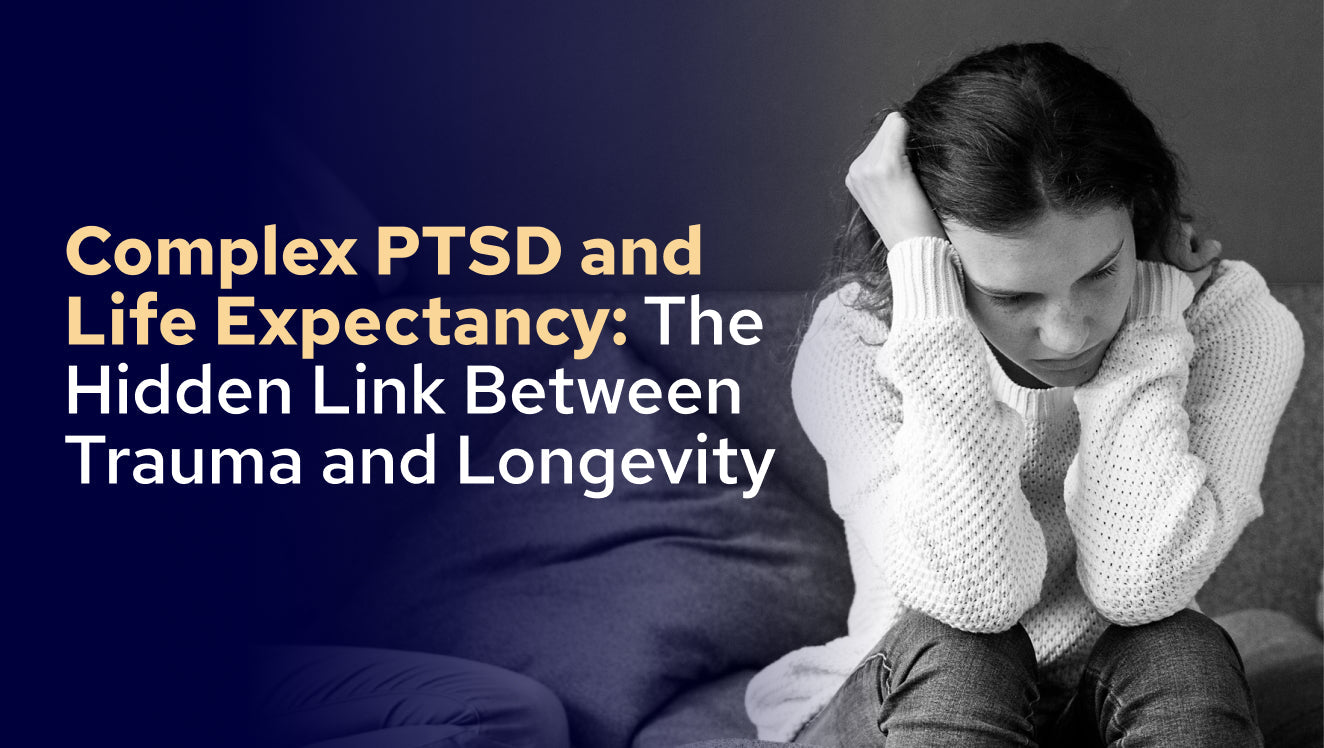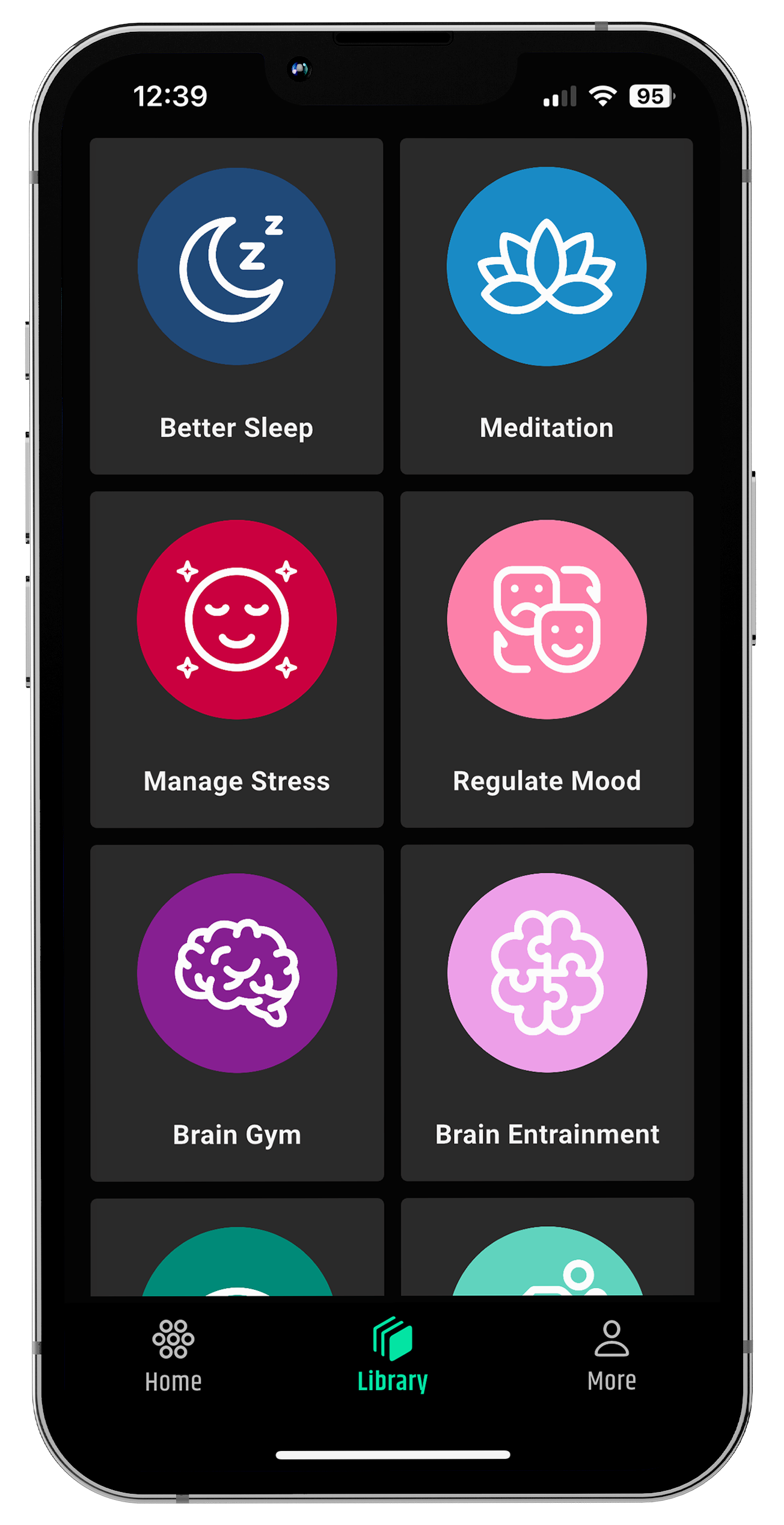Most people are aware that trauma impacts the psyche, but they are unaware of the extent to which it may extend to affect the body and even life itself. We have observed first hand at neuroVIZR that complex PTSD life expectancy is not only determined by emotional scars, but by continuous neurological and physiological stress. Unresolved trauma may change brain functioning, interrupt the healing processes of the body, and silently impair the life span.
The association between complex PTSD life expectancy is not about instilling fear but empowerment. Through therapeutic and neurological assistance to the right, one can re-train the brain, knock the nerves and get back the years of health and sanity.
What Is Complex PTSD?
Complex Post-Traumatic Stress Disorder (C-PTSD) develops after prolonged or repeated exposure to trauma especially in situations where escape feels impossible. This could include childhood abuse, long-term neglect, domestic violence, human trafficking, or combat experiences.
Unlike typical PTSD, which can stem from a single traumatic event, complex PTSD rewires the brain’s stress circuits over time, affecting emotional regulation and self-perception. Patients often experience:
-
Emotional dysregulation
-
Negative self-image
-
Relationship struggles
-
Dissociation and hypervigilance
-
Depression and re-experiencing trauma
In our experience working with trauma survivors, these symptoms are more than emotional they manifest in physical ways that directly affect long-term health.
Also read - Is PTSD a Disability
How Complex PTSD Impacts Everyday Health
A C-PTSD diagnosis isn’t a life sentence but it does carry implications for both mental and physical well-being. When trauma stays unprocessed, it keeps the nervous system in a constant state of alert, gradually wearing down the body.
We often see patients struggle with:
-
Sleep Disturbances: Insomnia and nightmares disrupt the brain’s repair cycles, leading to fatigue, hormonal imbalance, and increased risk of heart disease, diabetes, and hypertension.
-
Chronic Stress & Anxiety: Constant adrenaline release can damage the cardiovascular and immune systems, contributing to inflammation and digestive issues.
-
Persistent Pain: Unresolved trauma often triggers chronic pain through inflammation and nervous system dysregulation.
-
Unhealthy Coping Patterns: Substance abuse or self-harm may arise as temporary coping strategies.
-
Weakened Immunity: Chronic emotional strain suppresses immune response, leaving the body vulnerable to illness.
It’s important to remember: medication may ease symptoms, but therapy is what helps the brain process trauma and gradually restore equilibrium.
How Complex PTSD Can Affect Life Expectancy
Scientific research increasingly confirms what we’ve seen in our practice untreated trauma accelerates aging and can shorten life expectancy.
1. Reduced Lifespan by Up to 20 Years
A study in the American Journal of Preventive Medicine found that individuals who experienced six or more childhood traumas lived 20 years less on average.
Participants with higher trauma exposure were also 54% more likely to die prematurely during the 10-year study period.
The takeaway? Healing and therapy can literally add years back to your life.
2. Cellular and Neurological Aging
Research links PTSD and trauma to cellular-level aging particularly in brain regions tied to emotion and memory. Elevated inflammation and oxidative stress cause neurons to deteriorate faster, which may explain why trauma survivors often experience fatigue, cognitive fog, or accelerated physical aging.
3. Coexisting Mental and Physical Health Challenges
C-PTSD rarely exists alone. It often co-occurs with other disorders that further strain physical health:
-
Dissociative Disorders: Linked with cardiovascular irregularities and neurological symptoms like dizziness or seizures.
-
Depression: Can trigger fatigue, heart problems, and weakened immunity.
-
Borderline Personality Disorder: Contributes to digestive and sleep disruptions.
-
Anxiety Disorders: Lead to respiratory and cardiovascular complications.
When unaddressed, these layers of distress compound increasing the body’s overall wear and tear.
4. Substance Use and Self-Harm Risks
Unfortunately, many individuals attempt to numb trauma through harmful behaviors.
Studies show that:
-
26%–52% of those with C-PTSD report substance abuse.
-
22.8% engage in non-suicidal self-harm behaviors.
While these actions may offer short-term relief, they deepen the emotional and physical toll over time. Recognizing these patterns early and seeking professional guidance can prevent irreversible outcomes.
Healing and Treatment for Complex PTSD
The brain’s remarkable adaptability means healing is always possible even after years of trauma. Evidence-based approaches include:
-
Cognitive Processing Therapy (CPT): Helps reframe distorted trauma-related thoughts.
-
EMDR (Eye Movement Desensitization and Reprocessing): Reprograms how the brain stores traumatic memories.
-
Group Therapy: Creates connection and validation among survivors.
-
Mindfulness and Stress Reduction: Techniques like breathwork, yoga, and meditation calm the nervous system.
-
Lifestyle Changes: Nutrition, sleep, and physical activity support neuroplastic recovery.
-
Support Systems: Having compassionate family and professional guidance strengthens long-term progress.
-
Medication: Can assist with anxiety, depression, or sleep disturbances during recovery.
In our experience, combining neurological retraining tools (like neurostimulation or visual brainwave entrainment) with psychotherapy accelerates the healing process a principle we explore deeply at neuroVIZR app.
 Conclusion
Conclusion
Complex PTSD doesn’t just affect the mind it shapes how the body functions, how the brain repairs itself, and ultimately, how long we live. But recovery is real. Every time a trauma survivor chooses therapy, mindfulness, or neural retraining, they extend their capacity to live fully and peacefully.
At neuroVIZR, we believe in retraining the brain for recovery, helping individuals reconnect with safety, clarity, and vitality.
Key Takeaways
-
Complex PTSD can reduce lifespan by up to 20 years if untreated.
-
Chronic stress and inflammation accelerate aging at the cellular level.
-
Coexisting mental and physical disorders compound health risks.
-
Therapy and neuro-based healing approaches can restore both brain and body resilience.
Call to Action
In case you have the long-term trauma consequences, keep in mind - your brain has unbelievable abilities to regenerate and change.
Learn more about how the neuroscience-based tools at neuroVIZR can assist you to re-train your focus, de-stress, and balance your mind -one session a time.
Disclaimer
This article is for informational purposes only and does not substitute professional medical or psychological advice. If you are in crisis or experiencing suicidal thoughts, please seek immediate help from emergency services or a licensed healthcare provider.
Reference:
American Journal of Preventive Medicine – Study on Adverse Childhood Experiences (ACEs) and reduced lifespan.
National Library of Medicine (NIH / PubMed) – Data on PTSD, complex PTSD, and substance abuse correlations.
Medical News Today – Articles explaining how PTSD affects physical health and longevity.
Verywell Mind – Insights on complex PTSD symptoms and long-term health impact.
Psychology Today – Expert discussions on the emotional and physiological effects of C-PTSD.
Healthline – Research summaries on trauma, inflammation, and brain-body connections.
Frontiers in Psychology / Psychiatry – Studies on PTSD’s cellular aging, oxidative stress, and neurological effects.



























Teilen:
Ist PTBS eine Behinderung?
Welttag gegen Stress: Wie Ihnen das Verständnis Ihres Gehirns helfen kann, wieder Ruhe zu finden